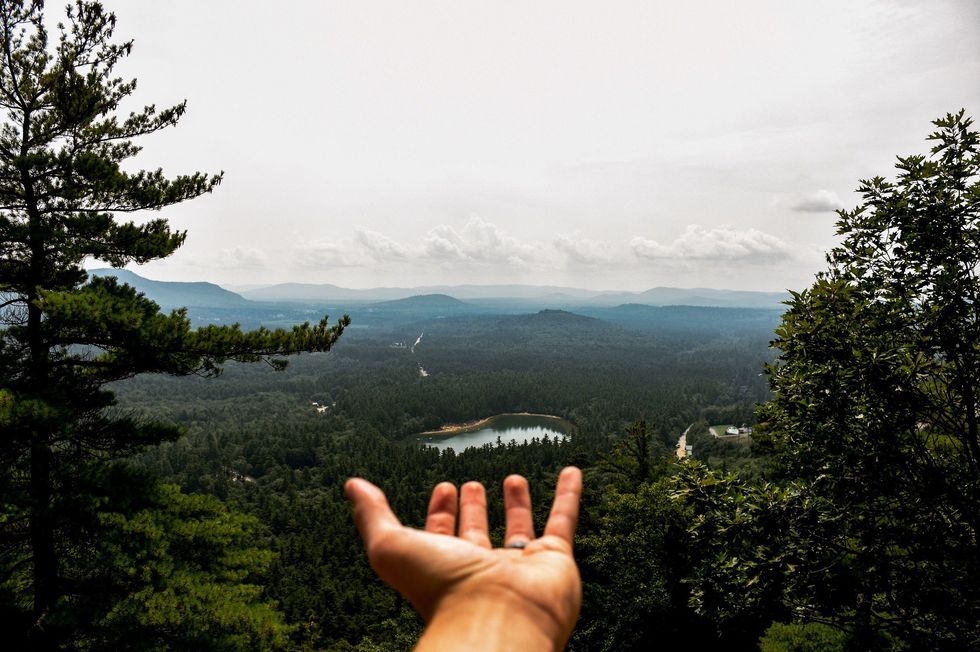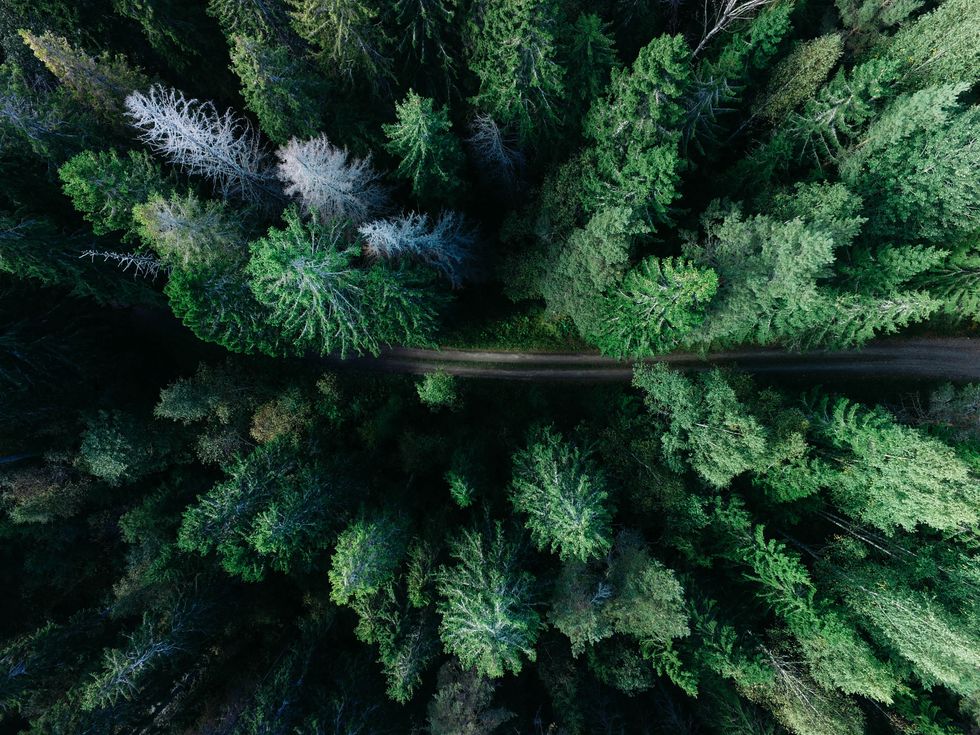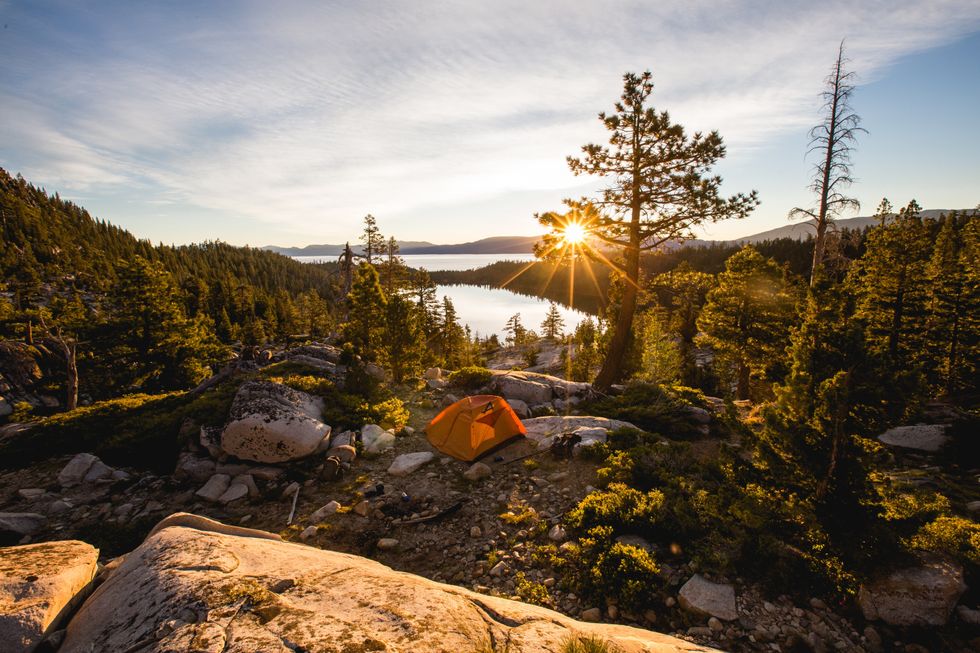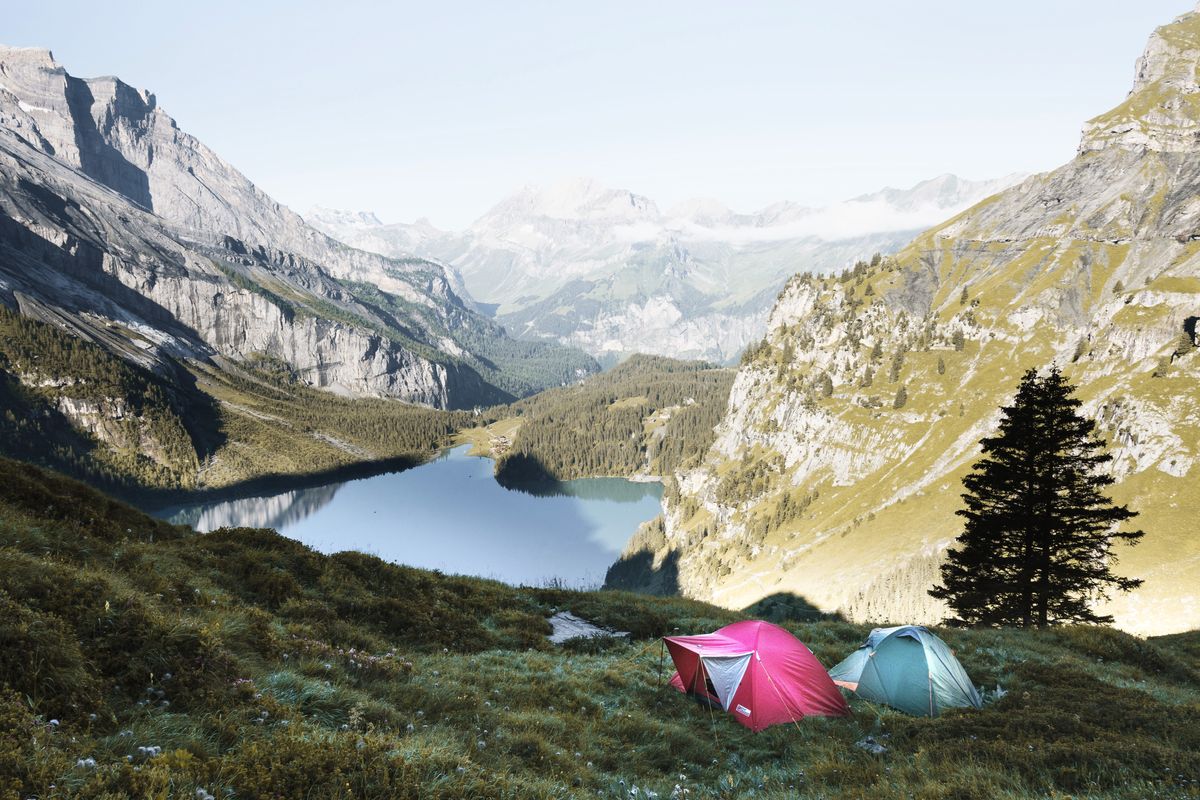Live out your into the wild dreams to the fullest.

Cracked, dirt-ridden skin, and fresh musky odor; car overflowing with a mishmash of miscellaneous items for life on the road, along with a free-will and an admirable ability to let go of societal bonds—the rugged traveler has been glorified over the years by authors like Jack Kerouac and Jon Krakauer. If you're anything like me, the grizzled nature of this character appeals to you and you often find yourself pretending that you are living out your adventures in his or her worn-down shoes.
Although this can be fun, these individuals are also known for their poor planning and empty bank accounts, which can make camping tough at times. Many campgrounds require a reservation be made weeks, sometimes months ahead of time, and can cost up to $30 a night. If you tend to be the type to set out on adventures without an agenda, do not fear. There are plenty of options for camping off the beaten path, especially if you're near one of the United State's 154 National Forests.

National Forest History
First off, if I didn't give some background on how National Forests came to be, I would be doing these adventurers a disservice. This section is for you if you are looking for some factoids to spew off while sitting around the campfire.
U.S. National Forests, originally known as Forest Reserves, date all the way back to March 30, 1891, when Yellowstone Park Timber and Land Reserve, now known as Shoshone National Forest, was appointed as a protected area. An integral part of the formation of National Forests was the Forest Reserve Act of 1891, which gave the president the power create Forest Reserves.
When Theodore Roosevelt became president in 1901, he was able to make use of the Forest Reserve Act to set aside huge amounts of land forming many of the National Forests you see today. During his term, which lasted until 1909, the title of these protected areas was changed from Forest Reserves to National Forests. The U.S. Forest Service, who still manages National Forests to this day, was established, and, most importantly, the total area of National Forests more than doubled. Teddy's efforts did so much for the early United States environmental movement that he is often referred to as the conservation president.
Fast forward 100 years and National Forests cover 188,336,179 acres and can be found in all but ten states and Puerto Rico. Alaska has the most total area of National Forest, with 21.9 million acres. Idaho has the highest ratio of National Forests, with land totaling at 38.2% of the state, and the United State's largest National Forest is Alaska's Tongass National Forest with over 17 million acres.

Dispersed Camping in National Forests
Along with being recognized for their long history in American conservation and stunning natural beauty, National Forests are known for allowing backpackers, travelers, and adventurers to camp (nearly) anywhere they want, for free. Dispersed camping, which is camping outside of a designated campsite, is allowed throughout U.S. National Forests as long as you follow a few logical guidelines: Camp 100 feet away from any water sources, 150 feet from the road, outside of a one-mile radius from any designated campground, don't stay there for more than 16 days and if for some reason you find yourself camping with 75 or more people, you need a permit. Also, depending on the season and area, campfires might not be allowed at dispersed camp sites.
However, dispersed camping doesn't mean that you should bulldoze your way through the woods and set up camp wherever you please, destroying plants and scaring away wildlife. Always look for a site that has visibly been camped at before, limiting your impact on the land. Luckily, there are more than enough of these sites in every National Forest, and an easy way to find them is to stop at a ranger station, where they will be able to pinpoint a few of the best spots in the area. If you aren't near a ranger station, find a map and look for service roads. Service roads are smaller dirt roads that are used by the Forest Service; they can be found off of any major road and are a hub for dispersed campgrounds. These roads can be rough at times, but even if you don't drive a vehicle with four-wheel drive, you should be able to find a service road that you can manage.
The main downfall of dispersed campgrounds is the lack of amenities that are standard at designated campsites. Occasionally very popular dispersed sites will have a bathroom, but it is safe to assume that you will be camping without restrooms, easy access to clean drinking water, tables, fire pits and trash cans. Digging a hole to go to the bathroom is standard. The upside is that this is camping in one of its rawest forms, completely cut off from the rest of the world. Depending on your perspective, dispersed camping can be more enjoyable than staying at a designated site; just make sure you come prepared.
One last reason that I have found dispersed camping in National Forests to be such a valuable resource is that National Parks are almost always bordered by National Forests, and sometimes even surrounded by them. I rarely find myself camping inside National Parks, with the main reason being I'm a poor planner and depending on the season and park, these sites can require reservations months in advance. They also can be expensive. Having a limitless number of campsites 10-minutes away from a National Park makes impromptu trips to some of our country's most mind-boggling environments possible, and cheap.
Now that you know the not-so-secret secrets of dispersed camping in National Forests, get out there.
This article was written by Sam Owens for Outdoor Project.





















